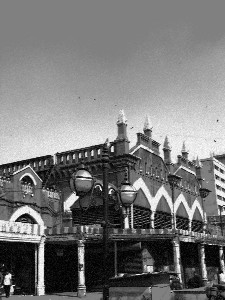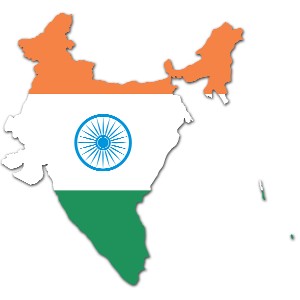Fascinating Facts about Calcutta
Locations Trivia With a population nearing the six million mark, the ancient city of Calcutta figures deeply into the imaginings of the wider world. A city of mystics and saints, artists and throngs of impoverished-Calcutta is a city of great extremes. The following article lists a wide array of facts and trivia about the Indian city of Calcutta.
With a population nearing the six million mark, the ancient city of Calcutta figures deeply into the imaginings of the wider world. A city of mystics and saints, artists and throngs of impoverished-Calcutta is a city of great extremes. The following article lists a wide array of facts and trivia about the Indian city of Calcutta.
Calcutta is the capital city of West Bengal, a northwestern state of India. It is known in Bengali as Kolkata. The name derives from the land of the Goddess Kali. The name was officially changed from Calcutta to Kolkata in 2001.
Considered the second city of the British Empire, Calcutta was established in 1690 by the East India Company. It grew out of the small fishing village of Kolikata. Before the East India Company acquired the land, the nearby villages were known for the production of muslin and chintz.
Job Charnock, a servant of the East India Company, is credited as the city’s founder.
St. Anne’s, Calcutta’s first church was built in 1709. The British went on to build about a three mile stretch of Calcutta they referred to as the white city. The neighboring black town was the area for native peoples.
Many inhabitants of the city refer to its patron goddess as Kali Kalkattawali, owner of the city. A famous festival for Kali is celebrated during a period of October and November.
The city’s most famous festivals include Durga Puta, Diwali, Holi and Christmas.
Calcutta sits in the Ganges River Basin and is spread along the shores of the Hooghly River cutting the city in two. The city itself is set apart from the Bay of Bengal by the notorious Sundarbans National Park (notable for its man-eating tigers).
The Hooghly River is a tributary of the Ganges River.
Calcutta is surrounded by creeks, mangrove swamps and marshes. While the outlanding areas contain ancient-looking bamboo huts, the city contains many modern buildings intermixed with colonial structures reminiscent of the British Empire that established and built the city.
There are three bridges and multiple ferry landing sites that link both sides of Calcutta. The Rabindra Setu is the city’s most famous bridge named for the writer Rabindranath Tagore.
Calcutta was the home of Rabindranath Tagore-the first Asian winner of the Nobel Prize for Literature. Tagore was born in the city in 1861.
Calcutta’s Kalighat metro station near the famous Kalighat temple contains a large mosaic rendering of Mother Teresa beneath a halo. The Albanian Catholic nun came to the city in 1931 where she took up Indian citizenship and devoted her life to helping the poor and diseased people of the city.
Calcutta is also known as “the city of dreadful light” which is a line taken from a Rudyard Kipling poem. Kipling visited Calcutta as a newspaper correspondent. Like Victorian London, the city embodied impoverished nooks set beside great wealth and grandeur.
Among Calcutta’s typically consumed foods are rice, fish curry and yogurt. Bull sharks are especially preferred for fish curries.
Hindu College was established in 1817. Today it is known as Presidency College and is one of the city’s best-known schools.
The colonial architecture of the city embodies Victorian, Baroque, Oriental, Gothic and Rococo styles. Because of the grand structures the city has also been termed the “city of palaces.”
 Calcutta’s most important street is Jawaharlal Nehru Road formerly known as Chowringhee Avenue. Historians believe it is also one of the city’s earliest roads that predates the East India Company.
Calcutta’s most important street is Jawaharlal Nehru Road formerly known as Chowringhee Avenue. Historians believe it is also one of the city’s earliest roads that predates the East India Company.
Calcutta contains India’s largest library known as the National Library of India. It was founded in 1836.
A major attraction for visitors to the city is the Alipore Zoological Gardens. It was founded in 1800 by Arthur Wellesley, First Duke of Wellington. The zoo sits on forty five acres and contains animals such as the Grant’s zebra, royal Bengal tiger, Indian elephant and African lion.
Calcutta’s largest park is called the Maidan which contains the famous Victoria Memorial which was completed in 1821.
Calcutta has a vibrant cultural community that is influential across the country. The city contains many art galleries, museums, cafes, etc … Calcutta is known for both its contributions to the arts as well as politics.

Actually, the Rudyard Kippling poem and line “The city of dreadful night”…not “The city of dreadful light.”